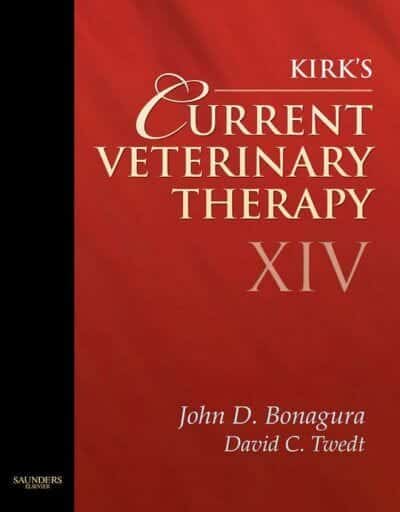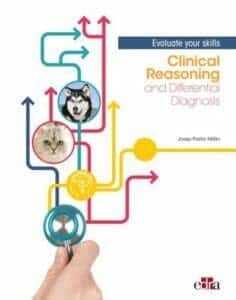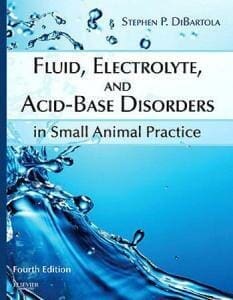Section 1: Critical Care
1. Shock
2. Acute Pain Management
3. Nutrition in Critical Care
4. Antiplatelet and Anticoagulant Therapy
5. Cardiopulmonary Cerebral Resuscitation
6. Traumatic Brain Injury
7. Vascular Access Techniques
8. Pacing in the Critical Care Setting
9. Fluid Therapy
10. Acid-Base Disorders
11. Colloid Fluid Therapy
12. Acute Abdomen: Evaluation and Emergency Treatment
13. Drainage Techniques for the Septic Abdomen
14. Gastric Dilatation-Volvulus
15. Emergency Management of Open Fractures
16. Thoracic Trauma
17. Intravenous Anesthetic and Analgesic Techniques
Section 2: Toxicologic Disorders
18. Toxin Exposures in Small Animals
19. Toxins Seen in Emergency Clinics
20. Reporting an Adverse Drug Reaction to the FDA
21. Sources of Help for Toxicosis Cases
22. Small Animal Poisoning: Additional Considerations Related to Legal Claims
23. Urban Legends of Toxicology-Facts and Fiction
24. Toxicosis Treatments
25. Rodenticide Toxicoses
26. Insecticide Toxicoses
27. Parasiticide Toxicoses: Avermectins
28. Lead Toxicosis in Small Animals
29. Automotive Toxins
30. Nicotine Toxicosis
31. Recently Recognized Animal Toxicants
32. Human Drugs of Abuse
33. Toxicology of Veterinary and Human Estrogen and Progesterone Formulations in Dogs
34. Herbal Hazards
35. Aflatoxicosis in Dogs
36. Nephrotoxins
37. Food Toxicoses in Small Animals
Section 3: Endocrine and Metabolic Diseases
38. Interpretation of Endocrine Diagnostic Test Results for Adrenal and Thyroid Disease
39. Medical Treatment of Hyperthyroidism
40. Radiodidine for Hyperthyroidism
41. Hypothyroidism
42. Obesity
43. Canine Diabetes Mellitus
44. Feline Diabetes Mellitus
45. Diet and Diabetes
46. Diabetic Monitorinq
47. Complicated Diabetes Mellitus
48. Atypical and Subclinical Hyperadrenocorticism
49. Hyperadrenocorticism
50. Adrenal Insufficiency in Critical Illness
51. Hypoadrenocoticism
52. Idiopathic Hypercalcemia in Cats
53. Treatment of Hypoparathyroidism
54. Hypercalcemia and Primary Hyperparathyroidism in Dogs
Section 4: Hematology, Oncology, Immunology
55. Immunosuppressive Agents
56. Blood Typing and Cross-Matching
57. Immune-Mediated Hemolytic Anemia
58. Nonregenerative Anemias
59. von Willebrand’s Disease and Other Hereditary Coagulopathies
60. Thrombocytopenia
61. DIC Diagnosis and Management
62. Platelet Dysfunction
63. Clinical Trials in Veterinary Oncology
64. Collection of Specimens for Cytology
65. Anticancer Drugs and Protocols – Traditional Drugs
66. Anticancer Drugs – New Drugs
67. Radiation Therapy
68. Surgical Oncology Principles
69. Canine Soft Tissue Sarcomas
70. Hemangiosarcoma
71. Feline Vaccine Associated Sarcoma
72. Canine Lymphoma
73. Feline Gastrointestinal Lymphoma
74. Paraneoplastic Hypercalcemia
75. Malignant Histiocytosis
76. Nasal Tumors
77. Pulmonary Neoplasia
78. Osteosarcoma
79. Mammary Cancer
80. Urinary Bladder Cancer
81. Mast Cell Tumor
82. Malignant Melanoma
83. Anal Sac Tumors
Section 5: Dermatologic Diseases
84. Cyclosporine Use in Dermatology
85. Interferons
86. Avermectins in Dermatology
87. Hypoallergenic Diets- Principles of Therapy
88. Pentoxifylline
89. Glucocorticoids in Dermatology
90. Pruritis Therapy in the Cat
91. Shampoo Therapy
92. Allergen-specific Immunotherapy
93. Topical Immune Modulatorsv
94. Dust Mites and Their Control
95. Topical Therapy of Otitis Externa
96. Systemic Therapy for Otitis Externa and Media
97. Ear Flushing Techniques
98. Feline Demodecosis
99. Feline Viral Skin Diseases
100. Canine Papillomaviruses
101. Pyotraumatic Dermatitis (Hot Spots)
102. Methicillin Resistant Canine Pyoderma
103. Sebaceous Adenitis
104. Malassezia Therapy
105. Treatment of Dermatophytosis in Dogs and Cats
106. Canine Cutaneous Histiocytic Diseases
107. Anal Sac Diseases
108. Acral Lick Dermatitis
Section 6: Gastrointestinal Diseases
109. Feline Stomatitis Faucitis
110. Dysphasia
111. Esophagitis
112. Megaesophagus
113. Helicobacter Gastritis
114. Gastric Ulceration
115. Inflammatory Bowel Disease
116. Tylosin Responsive Diarrhea
117. Trichomonas
118. Protein-Losing Enteropathy
119. Chronic Colitis in Dogs and Cats
120. Canine Ulcerative Colitis
121. Flatulence
122. Anal-Rectal Disease
123. Exocrine Pancreatic Insufficiency
124. Canine Pancreatic Disease
125. Feline Pancreatic Disease
126. Diagnostic Approach to Hepatobiliary Disease
127. Diagnostic Evaluation of Elevated Serum Alkaline Phosphatase in the Dog
128. Hepatic Support Therapy
129. Copper-Associated Chronic Hepatitis
130. Ursodeoxycholic Acid Therapy
131. Drug-Associated Liver Disease
132. Feline Hepatic Lipidosis
133. Cholangitisv
134. Portal Systemic Shunts
135. Biliary Mucocele in Dogs
136. Esophageal Feeding Tubes
Section 7: Respiratory Diseases
137. Oxygen Therapy
138. Ventilator Therapy
139. Rhinitis in the Dog
140. Rhinitis in the Cat
141. Brachycephalic Upper Airway Syndrome in Dogs
142. Nasopharyngeal Disorders
143. Laryngeal Diseases
144. Medical Management of Tracheal Collapse
145. Tracheal Collapse
146. Chronic Bronchitis in Dogs
147. Bordetella-bronchiseptica Bronchitis
148. Bronchitis and Asthma in Cats
149. Bacterial Pneumonia
150. Noncardiogenic Pulmonary Edema
151. Respiratory Parasites
152. Interstitial Lung Diseases
153. Pleural Effusion
154. Pneumothorax
155. Pulmonary Thromboembolism
156. Pulmonary Hypertension














![Ettinger’s Textbook of Veterinary Internal Medicine 9th Edition [PDF+Videos] Ettinger’s Textbook of Veterinary Internal Medicine 9th Edition [True PDF+Videos]](https://www.vet-ebooks.com/wp-content/uploads/2024/10/ettingers-textbook-of-veterinary-internal-medicine-9th-edition-100x70.jpg)

![Textbook of Veterinary Diagnostic Radiology 8th Edition [PDF+Videos+Quizzes] Thrall’s Textbook of Veterinary Diagnostic Radiology, 8th edition PDF](https://www.vet-ebooks.com/wp-content/uploads/2019/09/textbook-of-veterinary-diagnostic-radiology-8th-edition-100x70.jpg)






